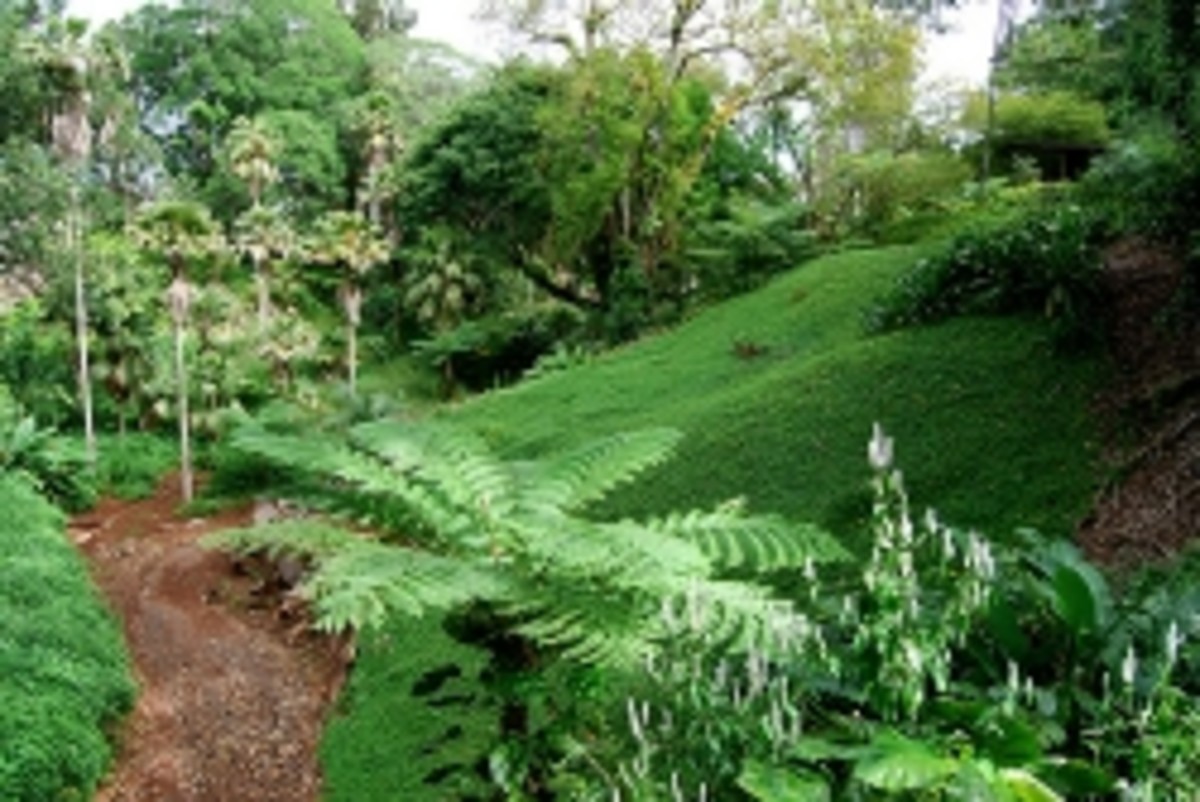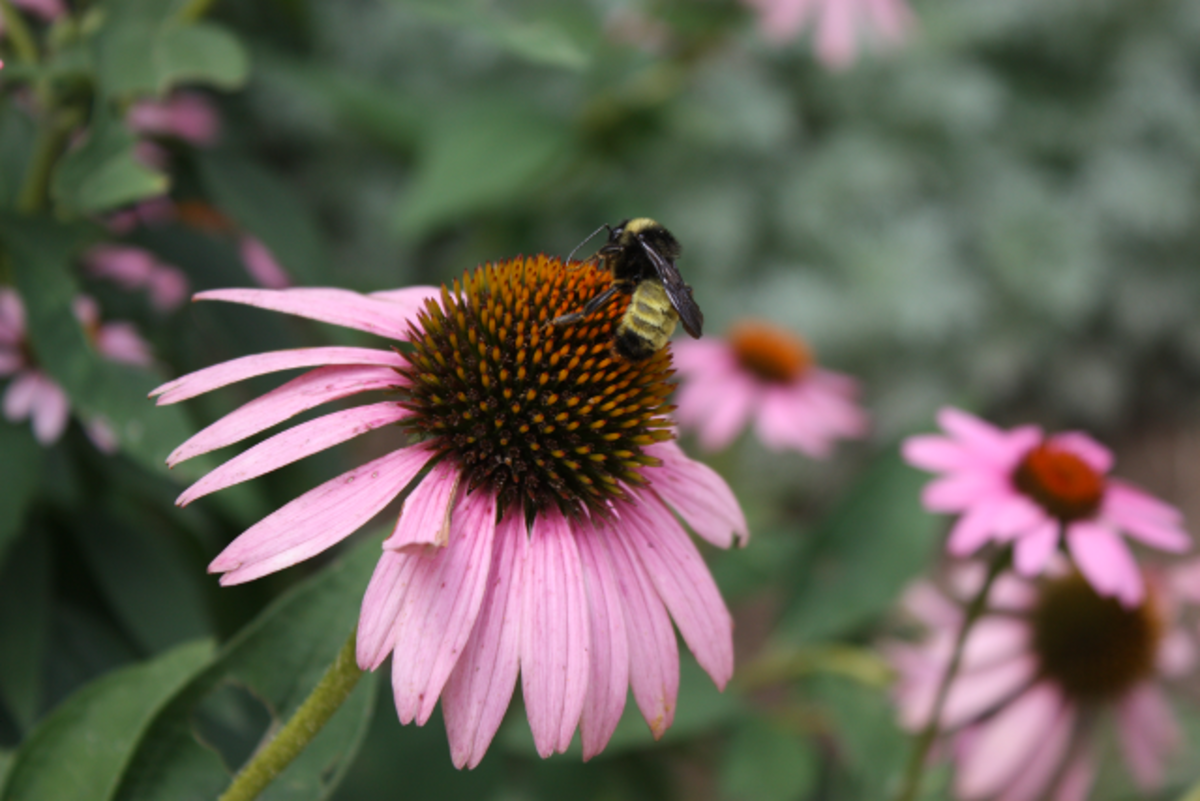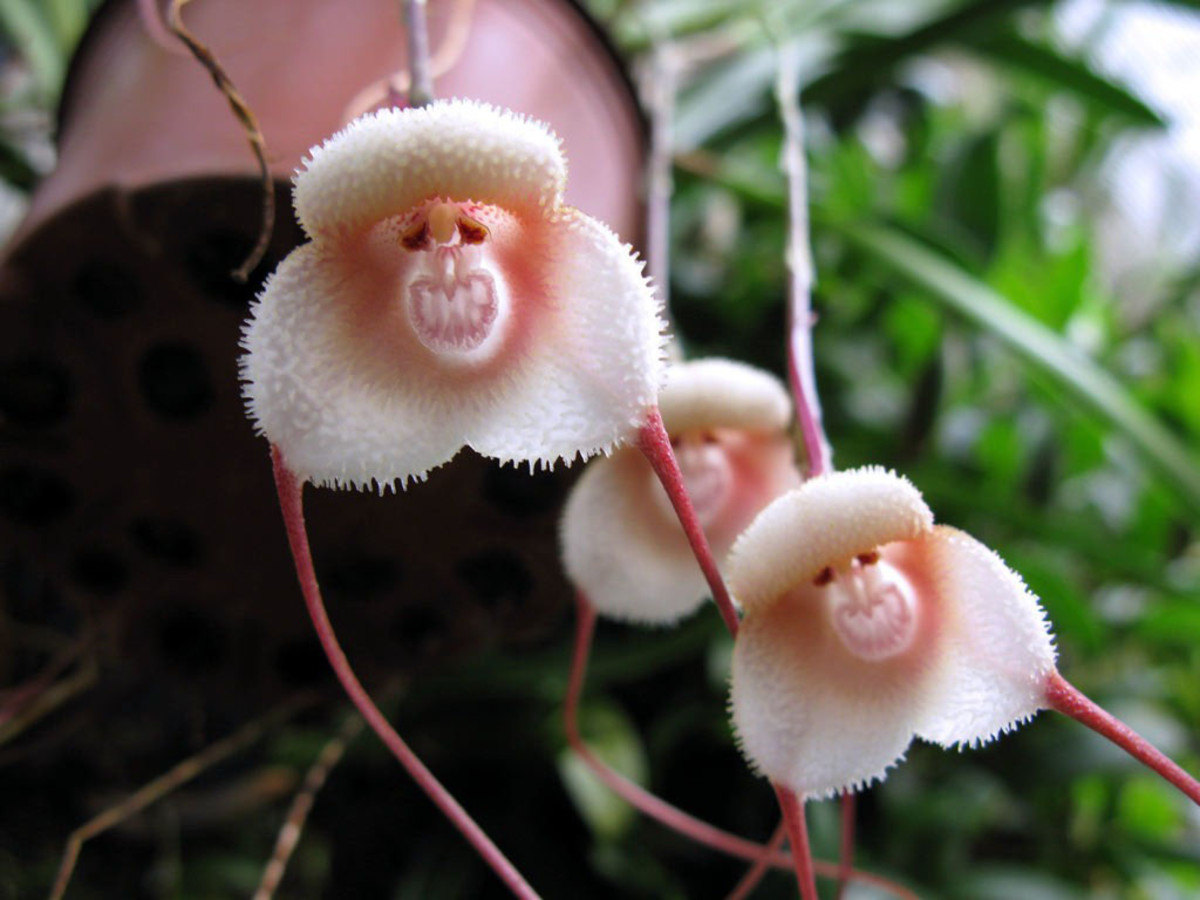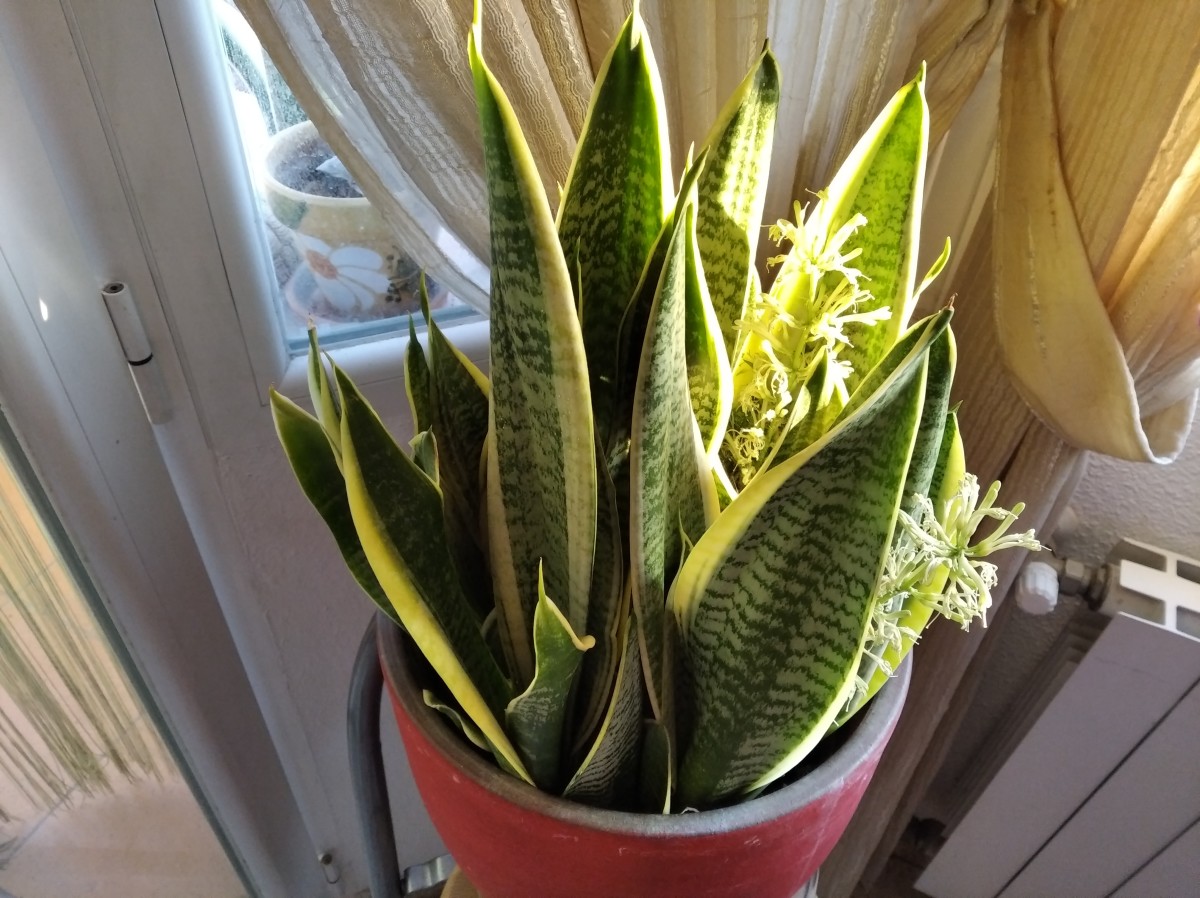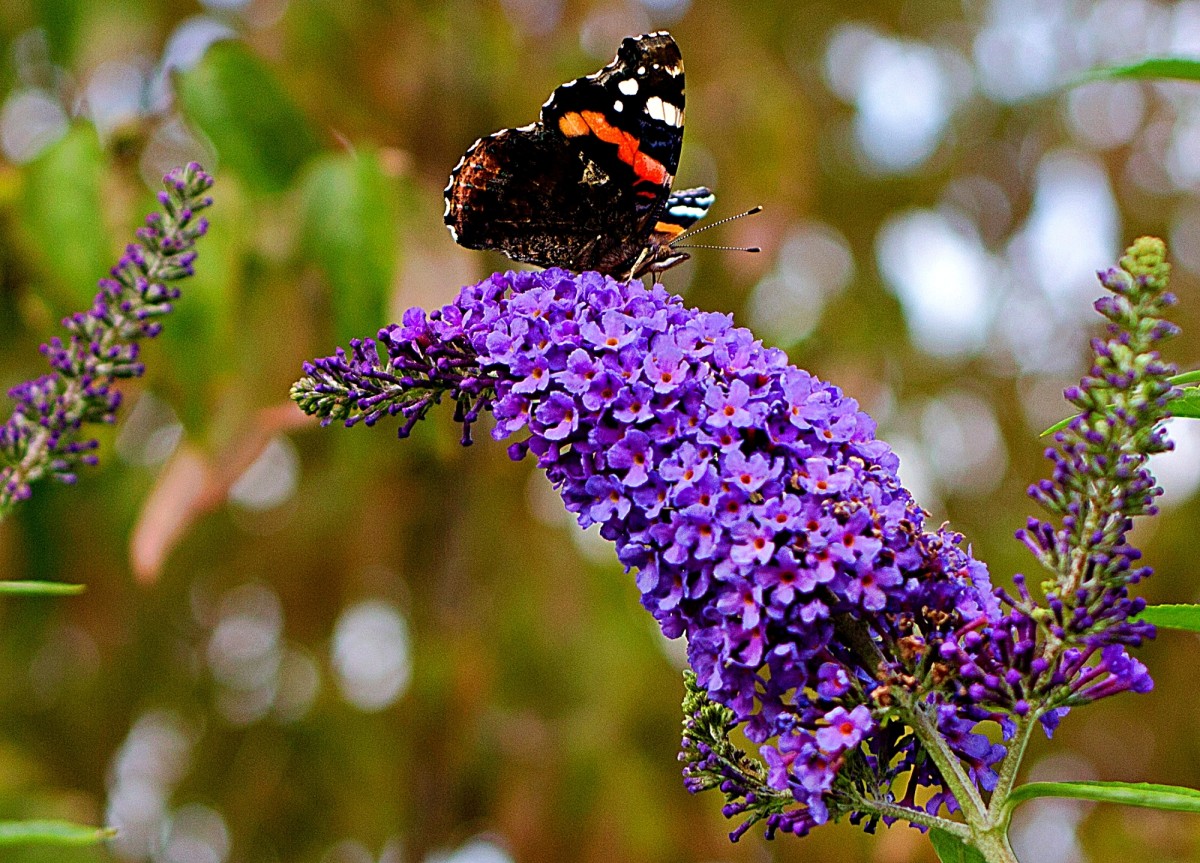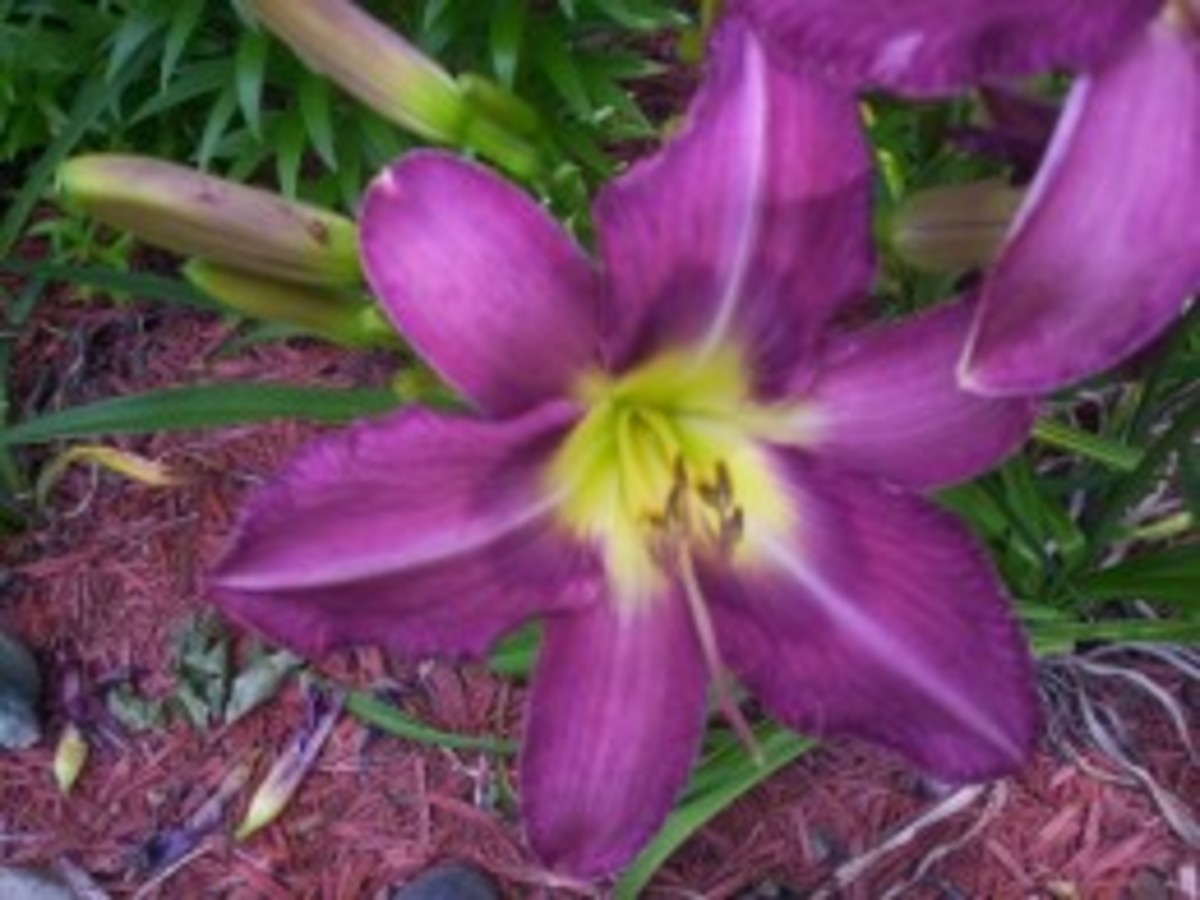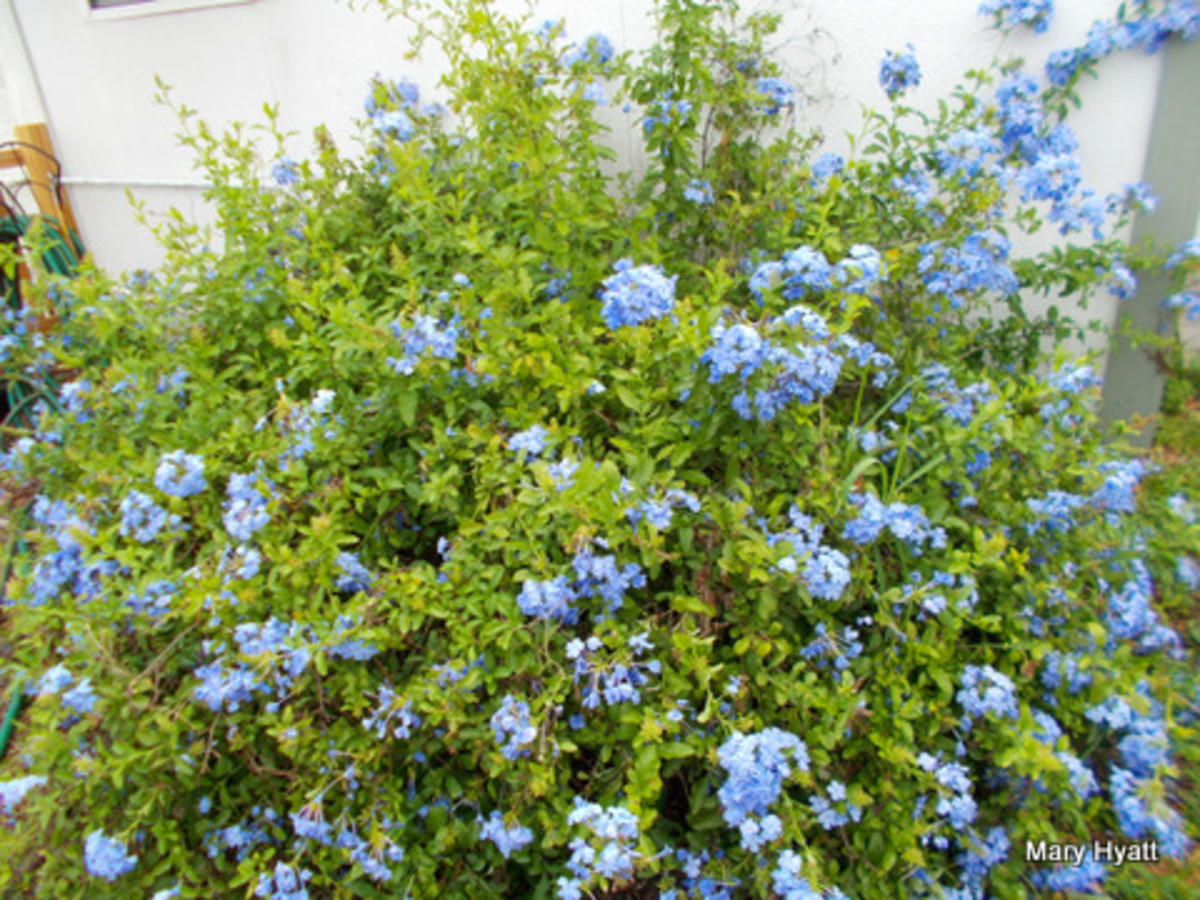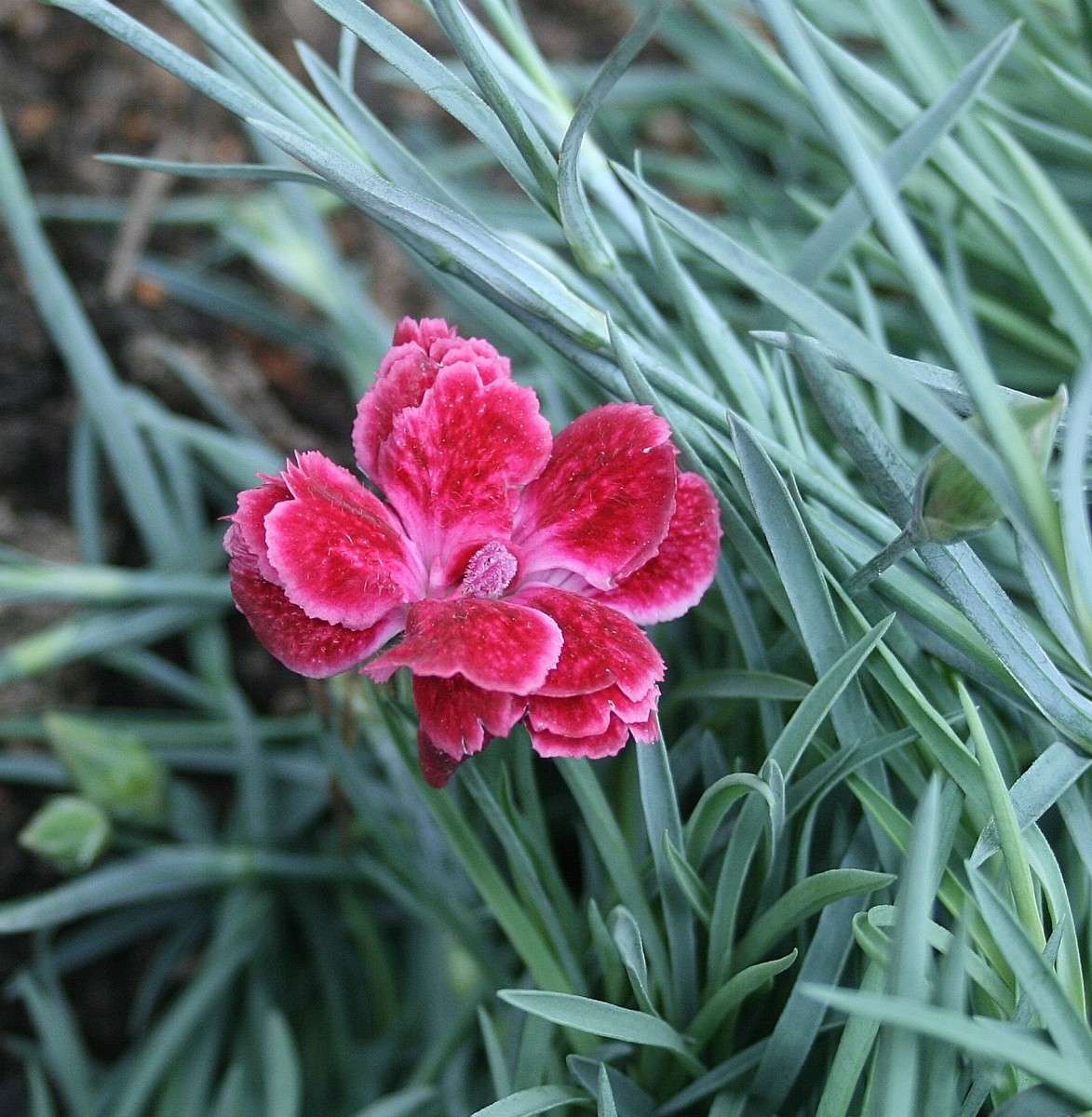Brisbane Parks: Spring Flowers at Mount Coot-tha Botanical Gardens
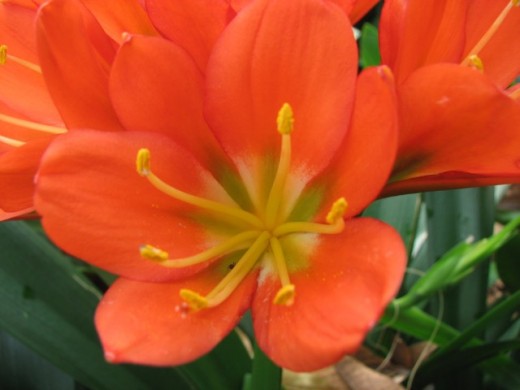
I thought I'd share with you two videos I created about the lovely Spring-flowering plants on display at the Mount Coot-tha Botanic Gardens in subtropical Brisbane, Australia. I captured the footage in the following videos on a warm, sunny day about three weeks into Spring 2011 during a visit to the gardens with friends. Below each video is a transcript if you have any troubles understanding my accent. I couldn't have possible captured everything in flower that day but have tried to share just some of the plants that caught my eye.
Spring Flowering Plants at the Mount Cooth-tha Botanical Gardens Part 1
Roses are in flower at the moment and this large multicoloured red, crème and white double flowered variety is no exception. It is named after the French painter Maurice Utrillo. This variety is bushy and disease-resistant and produces flowers in clusters.
This is Viola odorata or sweet violet, a lovely forest groundcover tolerant of shade and native to Europe and Asia. The species name odorata refers to the scent of the flowers. The scent contains a compound called ionone which temporarily disables the scent receptors of the nose, causing the scent to fade away until the receptors have recovered.
You’d be forgiven for thinking this was Alyssum but it’s actually Lobularia a closely related genus formally included in the genus Alyssum. It a great cottage flower and can be used to trail over edges. It’s profuse white flowers provide nectar for beneficial insects, especially hoverflies.
This is a vigorous but compact variety of lavender called Avonview growing to about 80cm high by about 60cm across. Lavenders prefer a sunny, well-drained position and to maintain their shape, just trim after flowering.
These flowers and dark glossy leaves belong to the hawthorne, Rhaphiolepsis umbellata, note the varying red or white stamen filaments. It can grow into a small tree or be kept pruned to hedge or shrub size.
A fond favourite of many is Viola tricolor, commonly known as heartease, wild pansy or Johnny jump ups. They are a common European wildflower that forms a creeping groundcover and grows best in partial shade. The nodding, cheery faces on these flowers always brighten up my day and I prefer these to many of the more cultivated Pansies. This plant also has a long association with herbalism and has many medicinal uses.
If you’re after a showy flower for a shady spot under a tree you could do worse than to put in a Clivia or Kaffir Lily. It’s strap-like glossy dark green leaves contrasts well with the large heads of bright orange flowers. The flowers have a faint but sweet perfume. This species, miniata, only reaches a height of about 45cm. The plant contains the toxin lycorine and is poisonous.
This curious little herb is Spilanthes acmella or toothache plant. While not grown for it showy flowers it was out in full bloom today. Its leaves and flower head contain a compound called spilanthol which can be used to numb toothache. It’s a perennial in our climate but may be killed by frosts in colder climates.
While you may be more familiar with the red Calliandra there is also a white variety called Alba. Like its cousin it’s tough as old boots, can be pruned into an informal hedge, provides nectar for birds and helps to fix atmospheric nitrogen and replenish the nitrogen in the soil.
This sea of yellow before you is actually not the flowers but the colourful bracts of Pachystachys lutea, commonly known as lollipop or golden shrimp plant. It is soft stemmed and grows to a height of about a metre tall. The actual flowers are white, short-lived and emerge from between the overlapping yellow bracts during the warmer months. It prefers to grow in a slightly acidic, well drained, rich soil and can grow in sun or semi-shade.
These bearded, purple, pea-like flowers belong to a Polygala hybrid commonly given the name sweet-pea shrub or milkwort. It requires good drainage but is drought hardy and will tolerate poor soils. Unlike Polygala myrtifolia this plant doesn’t appear to be invasive. It reaches a maximum height of about 1.5m with a spread of 1m and is a good plant for border plantings. It is frost tolerant and prefers a position in full sun or partial shade. Although in the same order as legumes, the Fabales, these plants do not fix nitrogen.
Hybrid of Abutilon known commonly as Chinese lanterns produce masses of hanging, pendulous, hibiscus-like flowers and large maple-like leaves. They flower in full sun or light shade and prefer some shade if grown in hot, dry climates. They like a well-drained soil and are quite thirsty so it’s a good idea to mulch them and water as needed. Avoid excessive fertiliser or they will put on lots of new growth and not flower. Lightly prune to shape at the end of winter or at the beginning of Spring in areas that receive frosts. They come in various colours such as these orange, and red varieties.
Spring Flowering Plants at the Mount Cooth-tha Botanical Gardens Part 2
Brunfelsia australis, commonly known as yesterday, today and tomorrow. Don’t be fooled by it’s species name, it isn’t a native and actually hails from Central and South America. This shrub grows to a maximum of two and a half metres tall and flowers profusely during September and October with both violet and white flowers occurring both at the same time. It prefers a sunny position but tolerates afternoon shade.
The Bird of Paradise Plant or Strelitzia reginae is one of the classic showpiece flowers for a tropical themed garden. They grow up to 2m tall by 2m wide, do well in full sun or semi-shade but prefer a rich soil and regular watering during the hotter months. They will not normally produce flowers until they are well established. There are yellow flowered, dwarf orange flowered and thin leafed cultivars also available. The plant in its natural habitat in South Africa is pollinated by Sunbirds and this is the reason behind their distinctive shape. When the sunbirds perch on the green spathe to drink the nectar from the flowers the blue arrow-like petals open allowing the feet of the birds to be covered with pollen.
This is Dombeya rotundifolia commonly known as South African Wild Pear although not related to edible pears. It is a small deciduous tree to 6m tall. The wood of this tree is a bluish-grey colour and is dense and tough and was sought after in the past for building horse-drawn wagons and carriages. This tree is one of the first to flower in Spring and they certainly do it in quantity. The abundant white flowers have a sweet scent and can even grow from the trunk itself. It is also a popular tree amongst beekeepers, as the flowers have a high nectar content, this one was covered in European Honey Bees and the buzzing was quite loud, even from a short distance away.
This wonderful display of salmon-pink flowers belongs to the old fashioned tree Rhondeletia amoena. The flowers have a faint perfume and are good for attracting butterflies. It can grow to about 5m tall or be kept as a shrub or hedge with regular pruning. They prefer full sun and a slightly acidic, well drained soil but are sensitive to frosts. They are not troubled by many pests or diseases.
These stunning red flower clusters belong to Brachychiton bidwillii, commonly known as the Little Kurrajong. It is a local native occurring from South-East Queensland to Bowen. It can be found naturally in open forests or dry rainforest and grows to about 4m tall. The species is quite variable and seed grown plants may form a multi-stemmed shrub or develop a single leader and form a small tree. They will usually drop all their leaves just prior to flowering which enhances the display. It prefers full sun and well drained soils.
This is Cleome spinosa or Spider Flower. They are known for there spidery pink flowers and exceptionally long seed pods. This one is a purple variety called Senorita Rosalita.
A favourite of the cut flower industry is the Gerbera. There were both pink and white ones out in flower today. When buying Gerberas it’s a good idea to select an old fashioned variety over the more showy modern hybrids which tend to be more prone to pests and diseases
This is a cultivar of Camellia reticulata called Miss Tulare which has large showy red double flowers. Although less well known than other species of Camellia, C. reticulata has some of the largest flowering varieties of all Camellias. This species like full sun, a rich, acidic soil and lots of mulch to keep the roots cool.
There were many varieties of Azalea also currently out in full bloom today, this one was a lovely pink cultivar called Rosalie.

